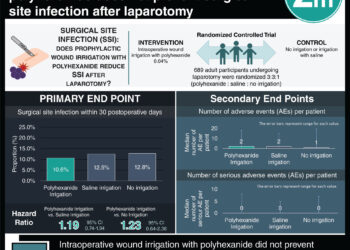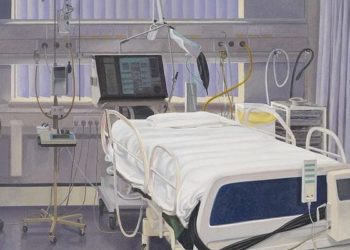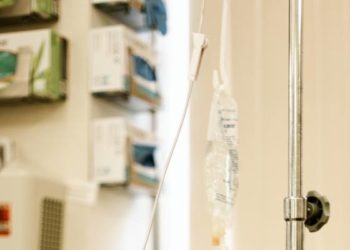#VisualAbstract: Risk of overcorrection in rapid intermittent bolus vs slow continuous infusion therapies for symptomatic hyponatremia
1. There is no difference in overcorrection rate when using slow continuous infusion or rapid intermittent bolus administration of hypertonic saline to correct hyponatremia.
2. Use of a rapid intermittent bolus strategy is associated with a lower incidence of requiring relowering therapy and with an increased incidence of achieving target correction rate within one hour.
Evidence Rating Level: 1 (Excellent)
The most common electrolyte imbalance encountered in clinical practice, hyponatremia, is often treated effectively with hypertonic saline. Both under- and over-correction, however, are associated with toxicity. Correction with small, fixed boluses is recommended by recent guidelines due to perceived efficacy, safety, and ease of administration. There is a paucity of data, however, clarifying whether hypertonic saline is best administered via slow continuous infusion (SCI) or by rapid intermittent bolus (RIB). This randomized controlled trial compared 87 patients managed with RIB (mean [SD] age = 72.9 [12.4] years, 48.3% male) with 91 patients managed with SCI (mean [SD] age = 73.2 [12.1] years, 41.8% male). The primary outcome was the incidence of overcorrection of hyponatremia. Mean serum sodium in both the RIB and SCI cohorts was 118.2 mmol/L. It was found that overcorrection occurred in 15 patients in the RIB cohort and 22 patients in the SCI cohort (absolute risk difference -6.9, 95% CI -18.8 to 4.9, p = 0.26). The RIB cohort, however, showed a lower incidence of requiring relowering treatment than the SCI cohort (41.4% vs. 57.1%, absolute risk difference -15.8%, 95% CI -30.3% to -1.3%, p = .04). This translates to a number needed to treat of 6.3. Furthermore, patients in the RIB cohort, on average, reached target correction rate within one hour more frequently than did patients in the SCI cohort (32.2% vs. 17.6%, absolute risk difference 14.6%, 95% CI 2% to 27.2%, p = 0.02) This translates to a number needed to treat of 6.8. In all, this study showed that correction of hyponatremia with both RBI and SCI is safe and effective with no difference in overcorrection rate, though RBI may be the preferred strategy due to a lower incidence of requiring relowering therapy and higher incidence of achieving target correction rate within one hour.
Click to read the study in JAMA Internal Medicine
©2020 2 Minute Medicine, Inc. All rights reserved. No works may be reproduced without expressed written consent from 2 Minute Medicine, Inc. Inquire about licensing here. No article should be construed as medical advice and is not intended as such by the authors or by 2 Minute Medicine, Inc.







